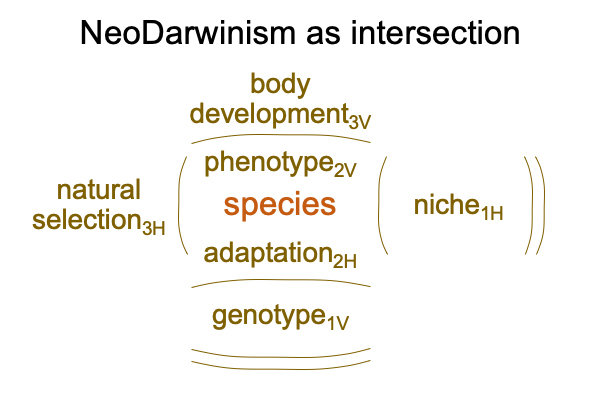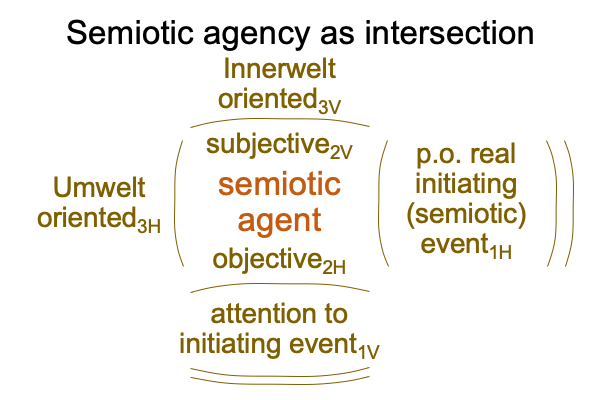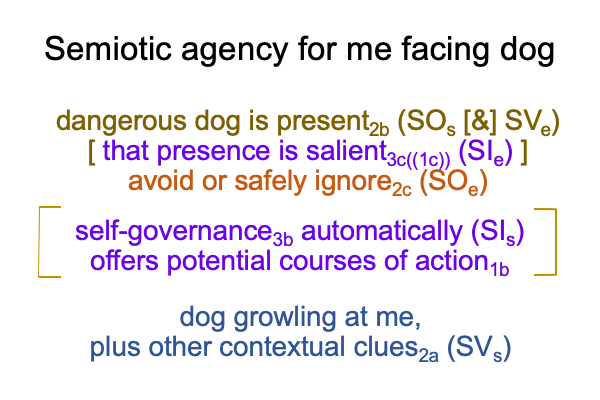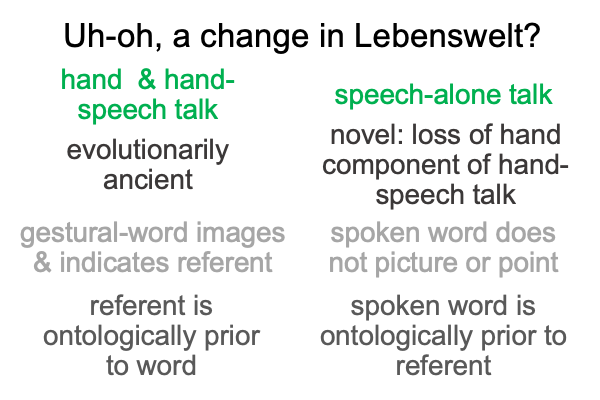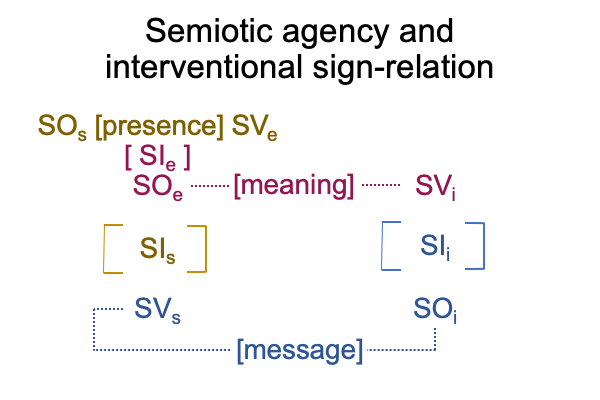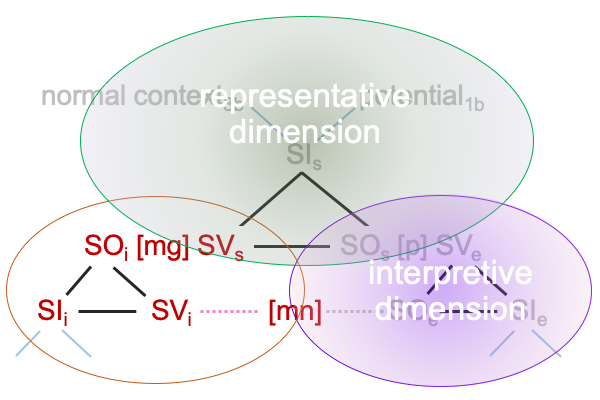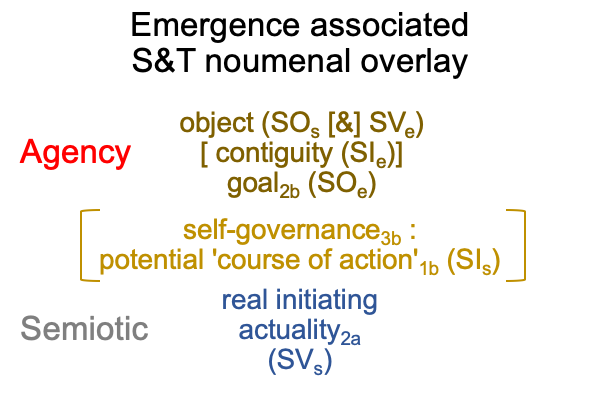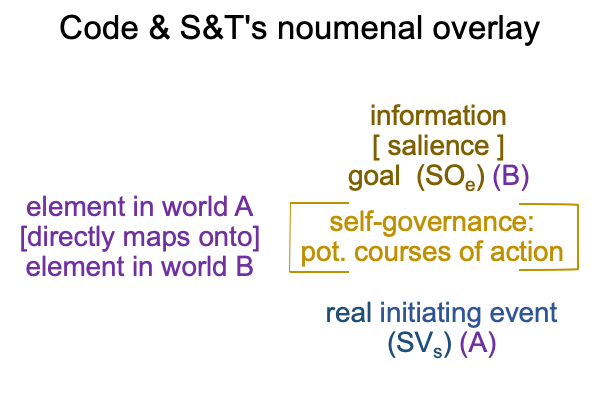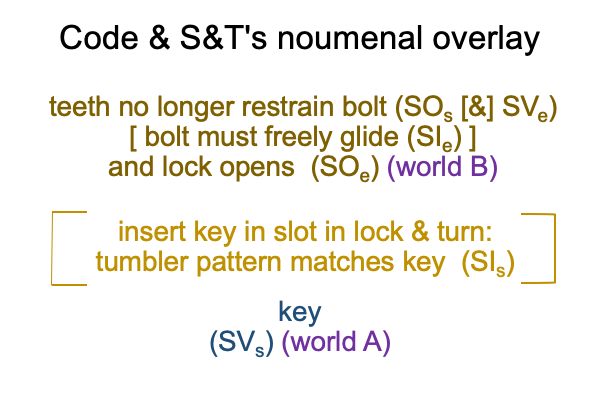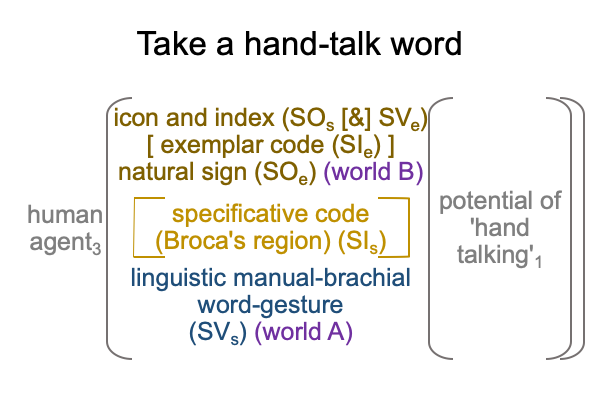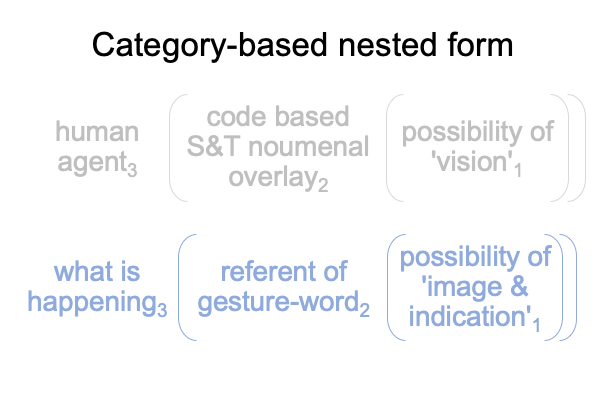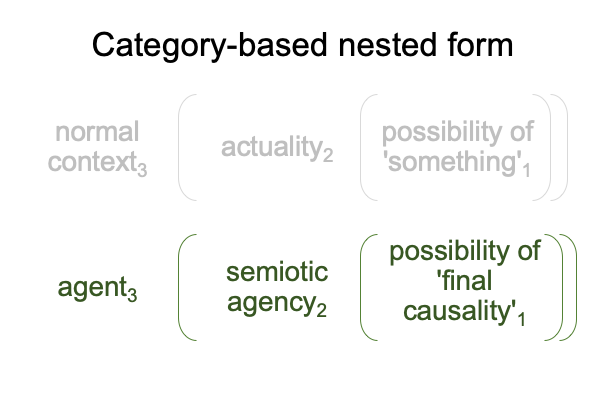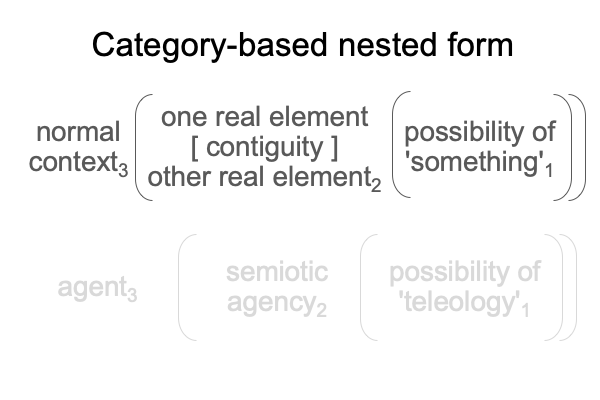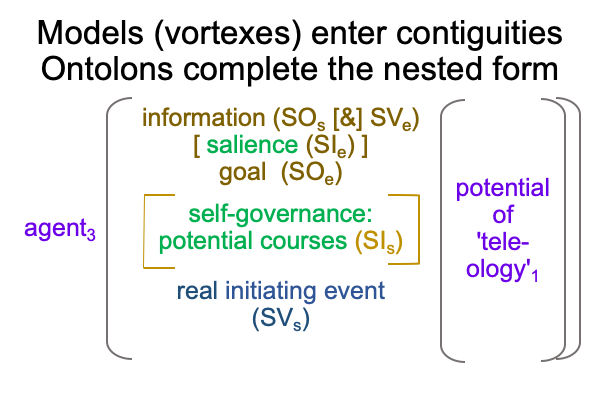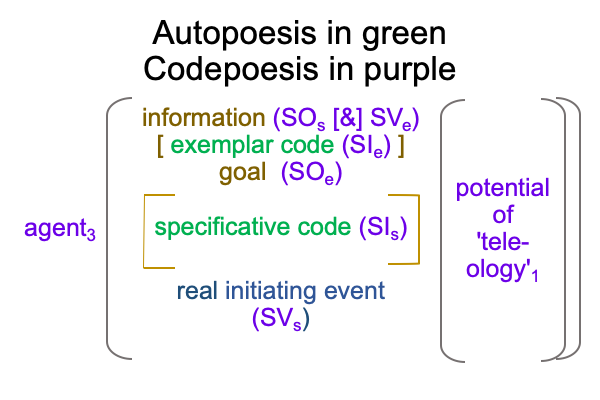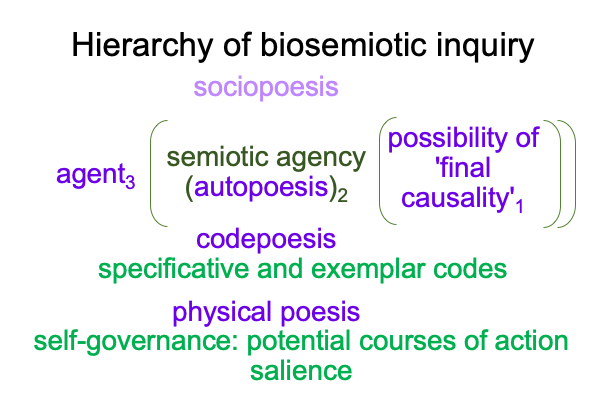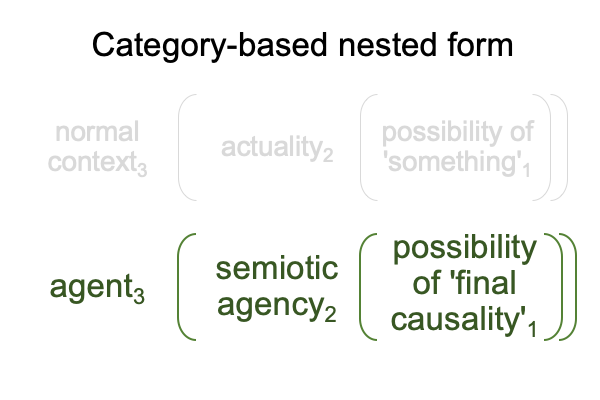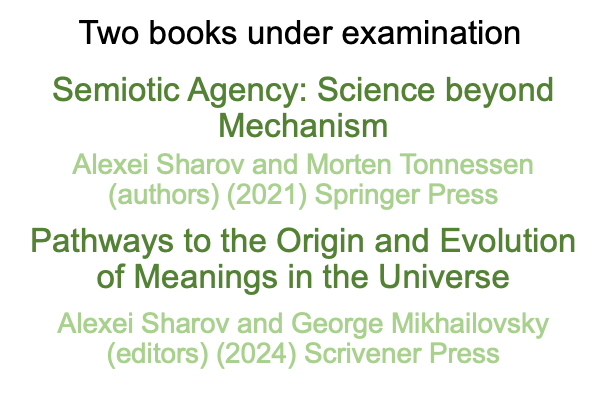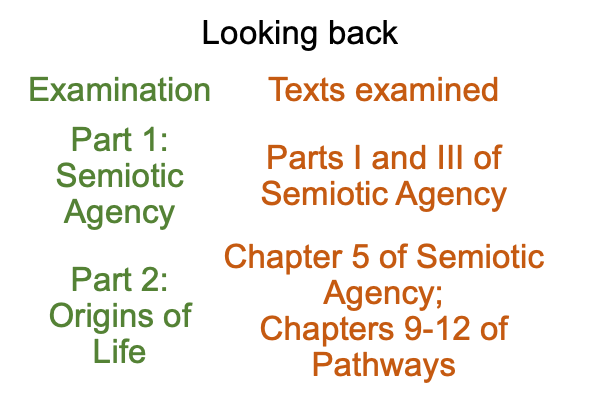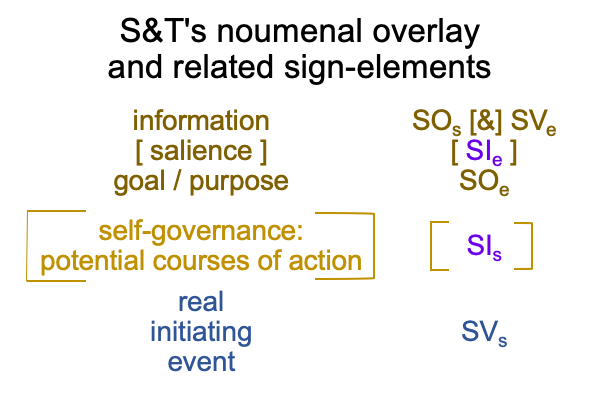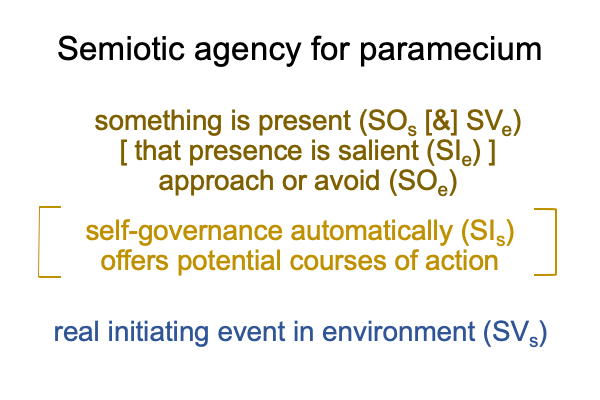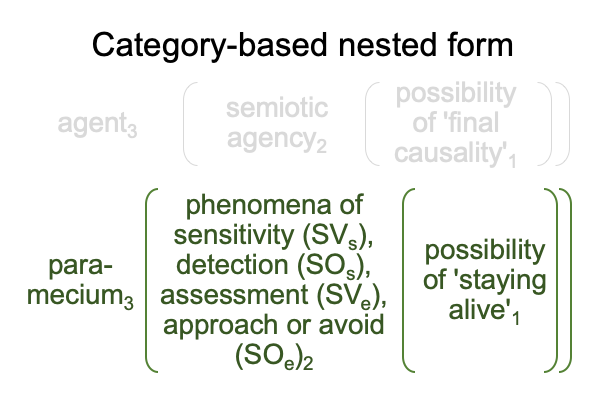Looking at Victoria Alexander’s Chapter (2024) “…The Emergence of Subjective Meaning” (Part 1 of 5
0696 The text before me is chapter fifteen in Pathways. Details on the book are found in point 0474. Chapter fifteen covers pages 325 through 344. This is the third chapter in Part III, titled, “Meanings in Organism Behavior and Cognition”, which is a long way of saying, “Non-human Agency”. The chapter’s full title is “Self-Reinforcing Cycles and Mistakes: The Emergence of Subjective Meaning”.
0697 Hmmm, I wonder, “Does the structure of the chapter’s title offer an example of a self-reinforcing cycle and a mistake?”
After all, the topic is the emergence of subjective meaning.
The proposed mechanism for the emergence is self-reinforcing cycles and mistakes.
0698 Putting the mechanism before the subject is like putting a cart before the donkey. The cart contains the mechanism. The donkey represents the emergent being.
This reminds me of the way that modern scientists are all about mechanistic and mathematical models (the cart). They disregard the noumenon (the donkey). They go so far as to say that the cart should take the place of the donkey. But, who ever heard of a cart that pulls itself?
0699 As far as the category-based nested form pictured below goes. The donkey goes with agent3. The cart associates to semiotic agency2. The donkey3 contextualizes the cart2. The donkey3 brings the cart2 into relation with the potential of ‘final causality’1, which does not appear in the title. Or does it?
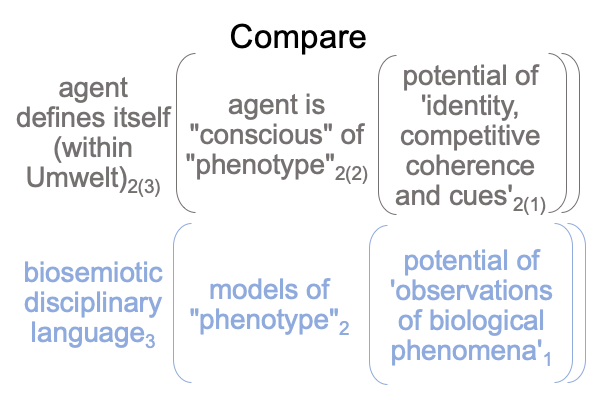
0700 The chapter’s title contains the terms “self-reinforcing cycles and mistakes”. These go with actuality, just like the cart.
The chapter’s title contains the term “subjective meaning”. I suppose that this goes with the normal context3, just like the donkey.
0701 Okay, what about the word, “emergence”, where does that fit in?
Uh-oh.
0702 Let me step back and ask myself, “How could a cart reveal the donkey as a normal context, rather than an actuality?”
How could self-reinforcing cycles and mistakes reveal subjective meaning as a normal context, rather than an actuality?”
0703 Hmmm. I suppose some adjustments are in order.
Emergence3 must be the normal context that brings the actuality of the dyad, donkey [pulls] cart2, into relation with well… the potentials that historically puts the donkey and the cart together1. Now, there’s an empedoclement.
Also, emergence3 must be the normal context that brings the actuality of the dyad, subject [experiences] meaning2, into relation with the potentials of ‘self-reinforcing cycles and mistakes’1. Ah, that suggests opportunities for empedoclements to happen.
0704 Usually, mistakes are impediments.
Occasionally, a mistake will be an empedoclement, which is the inverse of an impediment.
On top of that, some empedoclements seem (after the fact) to be inevitable. During the Uruk period of southern Mesopotamia, the donkey is domesticated for long-distance trade. The wheel is invented to make pottery. In retrospect, the actuality of donkey [pulls] cart2 seems destined.
0704 Now, all that I need to do is to realize that subjective meaning2 is an actuality. Actuality2 is dyadic. So, subjective meaning2 can be rendered as a dyad, consisting of two contiguous real elements. The two real elements? I suppose they must be the subject and the experience. After all, both are real. That leaves [meaning] as the contiguity.
In the following figure, the lower category-based nested form parallels the upper.
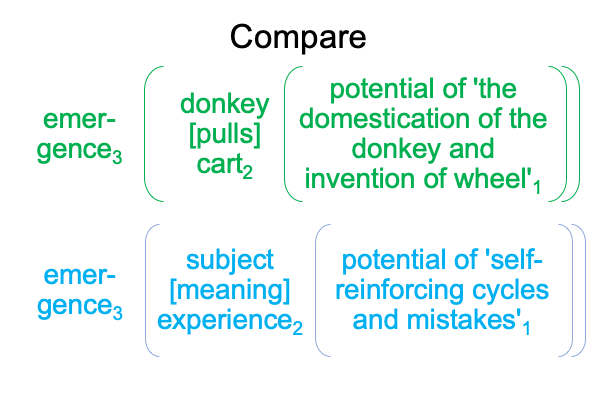
0705 Okay, by analogy, the title of “Self-Reinforcing Cycles and Mistakes: The Emergence of Subjective Meaning” reminds me of an anthropological story about the invention of the donkey pulled cart during the Uruk archaeological period of southern Mesopotamia.
0706 Having concluded my examination of the author’s prowess is synthesizing titles, I proceed directly to the conclusion (section 15.8), where the author makes three points (and maybe, one more) by way of summary (S, T U and maybe, V).
0707 First (S), NeoDarwinism may be a factor in evolution. But, it is not the only one.
On one hand, tell that to a modern biologist and watch the listener’s body-language say, “Oh no, am I talking to one of those intelligent design advocates?”
On the other hand, if I say, “Neodarwinism does not take triadic relations in account. If it did, then biological evolution would have to be called ‘mysterious’.”
Then, the modern biologist might think, “Oh worse! It’s a postmodern semiotician!”
But, it is not my mission to point out that biosemiotics performs what Christian intelligent design enthusiasts want to do, but cannot. Biosemiotics brings all of biology into the gambit of triadic relations, including Neodarwinism.
0708 How so?
In Comments on Dennis Venema and Scot McKnight’s Book (2017) Adam and the Genome, (available at smashwords and other e-book venues), Razie Mah shows that the living being (individual, species or genus) is the intersection of adaptation and phenotype. Then, in How To Define The Word “Religion”, Razie Mah shows that intersections are mysterious, fulfilling the expectation that the word, “mystery”, accounts for the message underlying the word, “religion”.
0709 Here is a picture of where I am going with this.
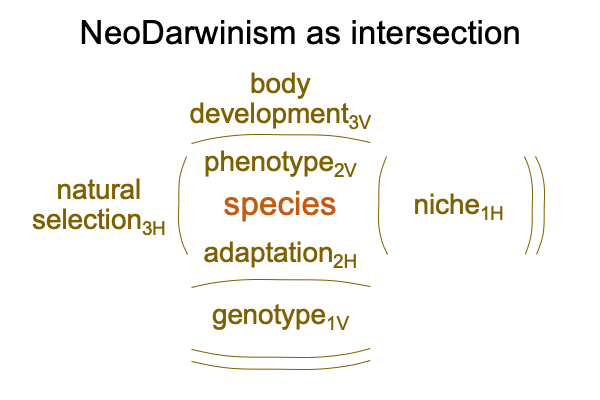
One category-based nested form is horizontal. The other is vertical.
Several steps are required to get there.
But, once I am there, the author’s claim that neodarwinism is insufficient will make sense in terms of semiotic agency.

